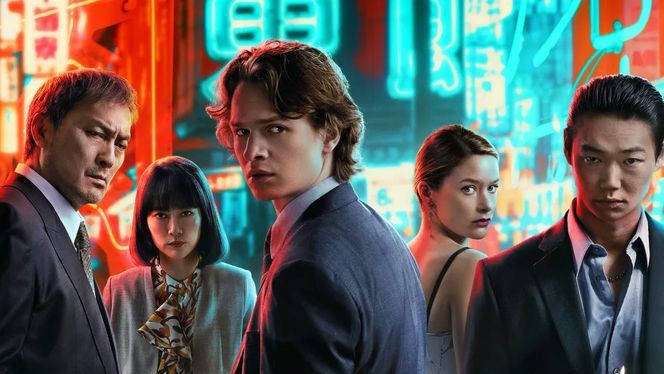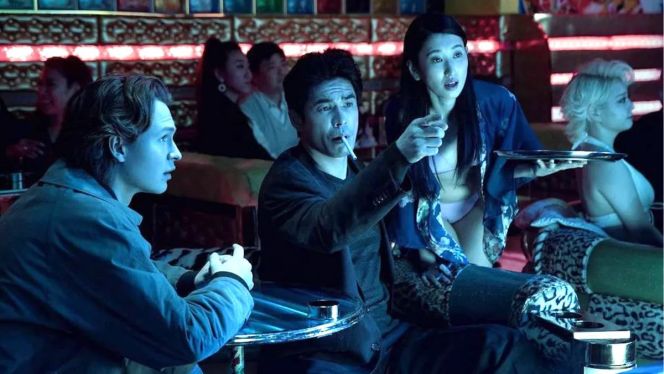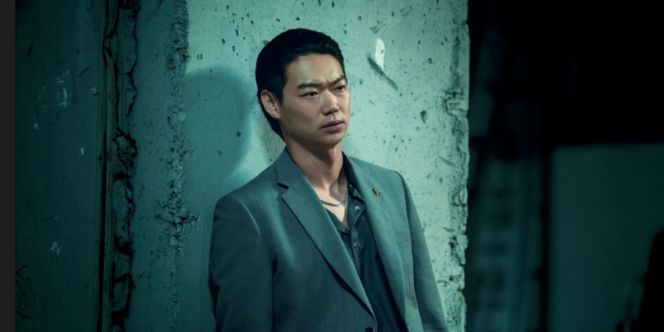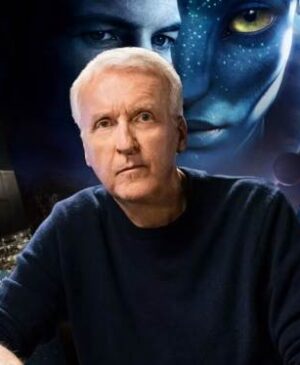SERIES REVIEW – The crime drama from Max returns in an even more thoughtful, mesmerizing, and thrilling format. The second season adeptly resolves the open-ended questions left by its predecessor, yet the real excitement begins in the latter half, following a time leap that sheds new light on its characters and plot from a fresh perspective. Patience here is not just a virtue but a key to unlocking the depths of the series, demanding a long-term commitment from its audience.
The inaugural season of Tokyo Vice kicked off with the fervent energy of a budding journalist. Just like the series’ lean, wavy-haired protagonist, it plunged into the depths of Japan’s yakuza underworld. Jake Adelstein (Ansel Elgort), the international correspondent for the Meicho newspaper, was determined to unravel the mysteries of organized crime on his very first day. Sam (Rachel Keller), another American expat, aimed to sidestep the mafia and smoothly open her nightclub. Sato (Show Kasamatsu) sought to prove his indispensable worth in the yakuza world. However, over eight episodes, each of their plans met with failure or tragedy. Ultimately, their downfalls defined the season, leaving them in a worse position than they started. Ending with numerous thrilling twists, the first season seemed to flee from cancellation. Tokyo Vice hinted at vast potentials. If only it had more time to unfold.
New Chapters, Old Secrets in Tokyo’s Dark Underbelly
The second season elegantly ties up the loose ends from the first season, from Polina’s death to Sato’s stabbing, and the fate of Sam’s club, all clarified within the first two hours. However, the real twist comes in the latter half. After a leap in time, we find Jake has stepped away from the yakuza beat, Katagiri (Ken Watanabe) is relegated to desk duty, Sam’s club is flourishing, and Sato is on the mend. The first half of the second season significantly slows down, asking for patience from both the characters and the viewers alike. But this is not a critique. The series needs time to mature fully. In the first season, Jake embodied the Japanese stereotypes against Americans: defiant with superiors, reckless with sources, and naively believing that a few articles could eradicate centuries of organized crime. Tokyo Vice returns with a more precise edition, ready to enrich the conventional rules with new twists, reinterpret situations, and approach the world from fresh viewpoints. This series trains the audience for long-term engagement.
“Patience is not a weakness,” Katagiri instructs Jake in an early episode. This philosophy permeates every scene crafted by J.T. Rogers. Rogers’ planning is more methodical than before, allowing the ripple effects of the finale to create a consistently tense atmosphere for subsequent episodes. The power vacuum left by Tozawa continues to reshape the underworld landscape, fostering unlikely alliances that dissolve just as quickly. However, yakuza dealings and the question of who leads the crime syndicate recede into the background as the personal lives of the characters deepen and unfold. Secondary characters are spotlighted as their personal stories weave into the broader narrative. Jake is not the only ambitious or intriguing reporter at the Meicho; his colleagues offer diverse insights into life in Tokyo.
Family First
In the latest season of Tokyo Vice, family themes emerge not through mysterious tape recordings but more transparently. Jake’s family is no longer a box of secrets but an open book. The series reveals previously unseen depths of its characters, allowing us to understand their personas better. For instance, Sato’s foremost goal is to shield his computer-genius younger brother from descending into a life of crime, a brother who draws the attention of Hayama (Yôsuke Kubozuka), an unpredictable high-ranking Chihara. Kasamatsu continues to portray Sato with a steely demeanor. The glimpses of humanity we’ve seen through his Backstreet Boys fandom prevent him from becoming a yakuza killing machine. Here, these traits are even more pronounced as he cares for his brother and another young boy, the son of a new romantic interest.
However, not every storyline unfolds as smoothly as Sato’s. Jake’s escapade with a certain lady, even by his own standards, is a reckless decision. Elgort, possibly still shadowed by allegations of sexual misconduct, has been absent from Hollywood for some time. Nevertheless, he shines as the affable lead, nurturing natural and warm relationships with his friends and lovers, especially alongside Watanabe. The charming dynamic between the inexperienced Jake and the wise Katagiri softens Watanabe’s usually stern gaze. As in West Side Story and Baby Driver, Elgort carries the narrative adeptly, though here his character is afforded more depth. Yet, in a season brimming with plot, his forced main romance seems more about maintaining proximity to Tozawa than genuine love or attraction. The mystery of Tozawa’s whereabouts looms over the episodes, but directors Alan Poul and Joseph Kubota Wladyka elegantly hint at his return, ensuring the storyline maintains its momentum.
Tozawa’s temporary absence allows Jake to explore broader aspects of Tokyo’s criminal world. His investigation into teenage motorcycle gangs promises a true journalistic adventure as he hitches a ride on the back of a stolen bike. This excitement is contagious, buoying episodes that might otherwise feel overwhelmed by the sheer volume of events. The moments when Jake can unwind serve as much-needed respite for both the character and the audience.
The Power of Locations
The magical effect of the locations in this series cannot be overstated. Being the sole American television production shot entirely in Japan affords Tokyo Vice a distinct advantage. Each scene steps outside the confines of typical American crime thrillers, offering a unique and authentic aesthetic that lifts the subdued drama. Cinematographers Daniel Satinoff and Corry Walter drench the screen in deep blues and glowing amber lights, with plumes of cigarette smoke and alleyway shadows creating a mesmerizing visual tapestry. The rigid architectural lines trap characters in nearly every scene, infusing almost every interaction with a thrilling sense of entrapment.
Tokyo Vice returns with a more focused and versatile season, creating more opportunities for deeper connections and understanding among characters. A sense of familiarity and comfort, previously unimaginable, now stands as the show’s greatest strength. The series’ scope widens, and its formal qualities become more refined. This is a robust set of episodes, confidently pointing the way forward. In summary: Halfway through this season, consider us thoroughly captivated.
-Gergely Herpai (BadSector)-
Tokyo Vice Season 2
Direction - 8.4
Actors - 8.2
Story - 8.5
Visuals/Music/Sounds - 8.2
Ambience - 8.5
8.4
EXCELLENT
In Tokyo Vice's second season, the series adopts a slower, yet more reflective pace, demanding a special level of patience and attention from viewers. Beyond the thorough development of characters and plots, the unique use of locations and visual design plays a significant role in crafting the series' distinctive atmosphere. The new season opens up new dimensions in the characters' lives, while amplifying the excitement and complexity of the narrative, making Tokyo Vice an even more captivating experience than before.
















Leave a Reply